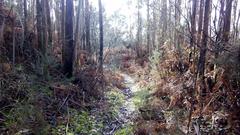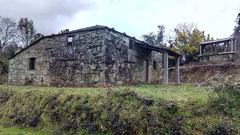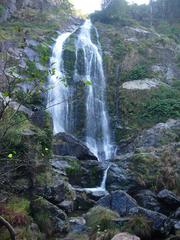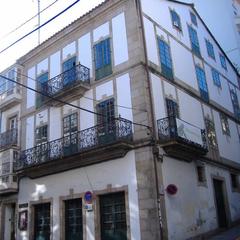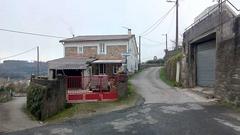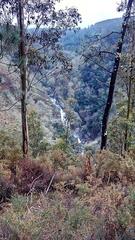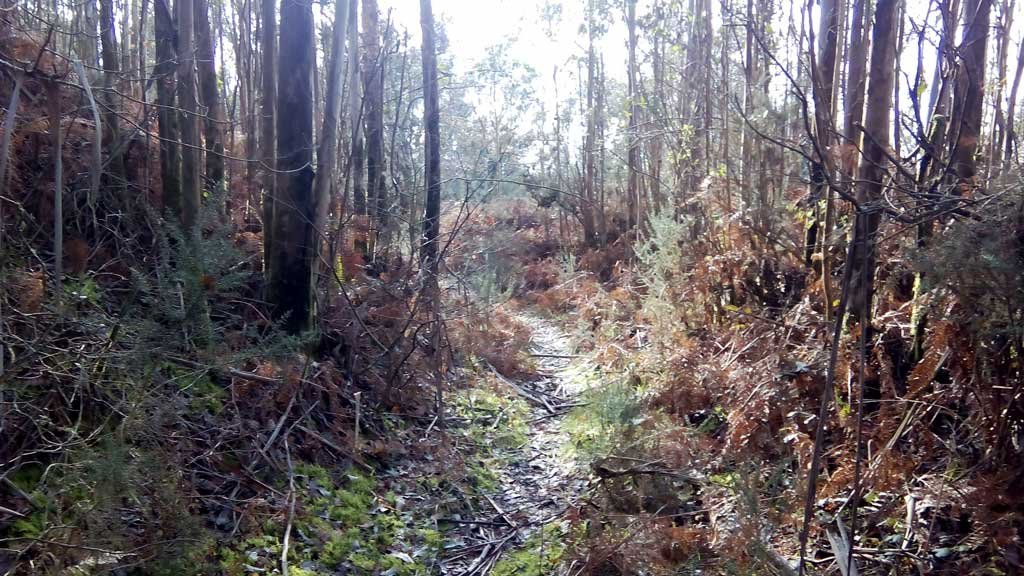
Comprehensive Guide to Visiting Santa Cruz Do Salto, Cabanas, Ferrol, Spain
Date: 16/08/2024
Introduction
Santa Cruz do Salto, nestled in the parish of Santa Cruz within the municipality of Cabanas, Ferrol, Spain, is a treasure trove of historical, cultural, and architectural significance. This comprehensive guide aims to provide an in-depth exploration of Santa Cruz do Salto, encompassing its rich historical background, current visitor information, travel tips, and nearby attractions. The Igrexa de Santa Cruz do Salto, a prime example of Romanesque architecture from the 12th century, stands as a testament to the region’s ecclesiastical and monastic expansion during medieval times (Turismo de Galicia). The church’s location along the Way of St. James, a significant pilgrimage route, further underscores its historical and spiritual importance (Marly Camino). Over the centuries, Santa Cruz do Salto has witnessed various phases of development, from its early medieval roots to its role during the naval and industrial era of the 18th and 19th centuries, when Ferrol emerged as a crucial naval base and shipbuilding center (Guías Viajar). In recent times, efforts have been made to revitalize the region through tourism and cultural heritage preservation, ensuring that the architectural and historical legacy of Santa Cruz do Salto remains vibrant and accessible to visitors (Spain.info).
Table of Contents
Historical Background
Early Beginnings and Medieval Era
Santa Cruz do Salto has a rich historical tapestry that dates back to the early medieval period. The region’s history is deeply intertwined with the broader historical developments of Galicia, a region known for its unique cultural and historical identity within Spain. The earliest records of Santa Cruz do Salto suggest that it was part of the broader Christian reconquest efforts during the medieval period, aimed at reclaiming territories from Moorish control.
The Role of the Church
The Igrexa de Santa Cruz do Salto (Church of Santa Cruz do Salto) stands as a testament to the region’s historical and religious significance. This church is a prime example of Romanesque architecture, a style that flourished in Europe during the 11th and 12th centuries. The church’s construction likely began in the late 12th century, coinciding with a period of significant ecclesiastical and monastic expansion in Galicia. The Romanesque style is characterized by semi-circular arches, robust structure, and detailed stone carvings, all of which are evident in the architecture of the Igrexa de Santa Cruz do Salto (Turismo de Galicia).
The Way of St. James
Santa Cruz do Salto’s historical significance is further amplified by its connection to the Way of St. James (Camino de Santiago), a network of pilgrimage routes leading to the shrine of the apostle Saint James the Great in the cathedral of Santiago de Compostela. This pilgrimage route has been a major religious and cultural phenomenon since the Middle Ages, attracting pilgrims from all over Europe. The presence of the Igrexa de Santa Cruz do Salto along this route underscores its importance as a spiritual and logistical stop for pilgrims (Marly Camino).
The Naval and Industrial Era
The broader region of Ferrol, within which Santa Cruz do Salto is situated, experienced significant transformations during the 18th and 19th centuries. Ferrol became a crucial naval base and shipbuilding center for the Spanish Navy. This period saw the construction of extensive shipyards and military arsenals, which brought economic growth and population influx to the area. The naval industry not only shaped the economic landscape but also influenced the social and cultural fabric of the region (Guías Viajar).
Modern Developments
In the 20th century, Ferrol and its surrounding areas, including Santa Cruz do Salto, faced economic challenges due to the restructuring of the naval sector. The decline of the shipbuilding industry led to economic hardships and population decline. However, recent efforts have focused on revitalizing the region through tourism and cultural heritage preservation. The historical and architectural significance of sites like the Igrexa de Santa Cruz do Salto has been central to these efforts, attracting visitors interested in history, architecture, and the Camino de Santiago pilgrimage (Spain.info).
Visitor Information
Visiting Hours and Tickets
The Igrexa de Santa Cruz do Salto is open to visitors daily from 9 AM to 6 PM. Admission is free, but donations are welcome to help with the preservation of the site. Guided tours are available on weekends at 11 AM and 2 PM, offering deeper insights into the church’s history and architecture.
Nearby Attractions
While visiting Santa Cruz do Salto, consider exploring other nearby attractions:
- Sanctuary of San Andrés de Teixidó: A pilgrimage site known for its stunning coastal views and spiritual significance.
- Caaveiro Monastery: A beautifully preserved monastic site offering a glimpse into the region’s monastic traditions.
Travel Tips
- Best Photographic Spots: Capture the beauty of the Romanesque architecture at the Igrexa de Santa Cruz do Salto, especially during the golden hours of early morning or late afternoon.
- Accessibility: The church and surrounding areas are accessible to visitors with mobility challenges, with paved paths and ramps available.
- Special Events: Check the local calendar for special events like religious festivals and cultural celebrations that offer a unique experience of the region’s traditions.
Preservation and Tourism
Efforts to preserve the historical and cultural heritage of Santa Cruz do Salto have been bolstered by its inclusion in various tourism and cultural initiatives. The Turismo de Galicia organization plays a pivotal role in promoting the region’s historical sites, including the Igrexa de Santa Cruz do Salto, as part of the broader cultural and heritage tourism strategy. These initiatives aim to balance the preservation of historical sites with the promotion of sustainable tourism, ensuring that future generations can continue to appreciate the region’s rich history (Turismo de Galicia).
FAQ
What are the visiting hours for Igrexa de Santa Cruz do Salto?
The church is open daily from 9 AM to 6 PM.
Is there an admission fee?
Admission is free, but donations are welcome.
Are guided tours available?
Yes, guided tours are available on weekends at 11 AM and 2 PM.
What are some nearby attractions?
Nearby attractions include the Sanctuary of San Andrés de Teixidó and Caaveiro Monastery.
Is the site accessible to visitors with mobility challenges?
Yes, the church and surrounding areas are accessible with paved paths and ramps.
Conclusion
Visiting Santa Cruz do Salto in Ferrol, Spain, offers an enriching experience that combines historical exploration, architectural marvels, and natural beauty. From the Romanesque splendor of the Igrexa de Santa Cruz do Salto to the serene trails of Parque Natural das Fragas do Eume, this region presents a diverse array of attractions that cater to history enthusiasts, nature lovers, and cultural explorers alike (Turismo Cabanas). The inclusion of Santa Cruz do Salto in various tourism and cultural initiatives underscores the importance of preserving its historical and architectural heritage while promoting sustainable tourism (Turismo de Galicia). Whether you are embarking on the Way of St. James pilgrimage or simply exploring the rich tapestry of Galicia’s history, Santa Cruz do Salto promises a memorable and insightful journey. Plan your visit today to experience the timeless charm and historical significance of this remarkable destination.
References
- Turismo de Galicia, 2023, source url
- Marly Camino, 2023, source url
- Guías Viajar, 2023, source url
- Spain.info, 2023, source url
- Turismo Cabanas, 2023, source url
